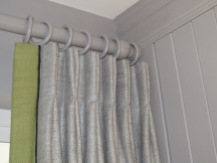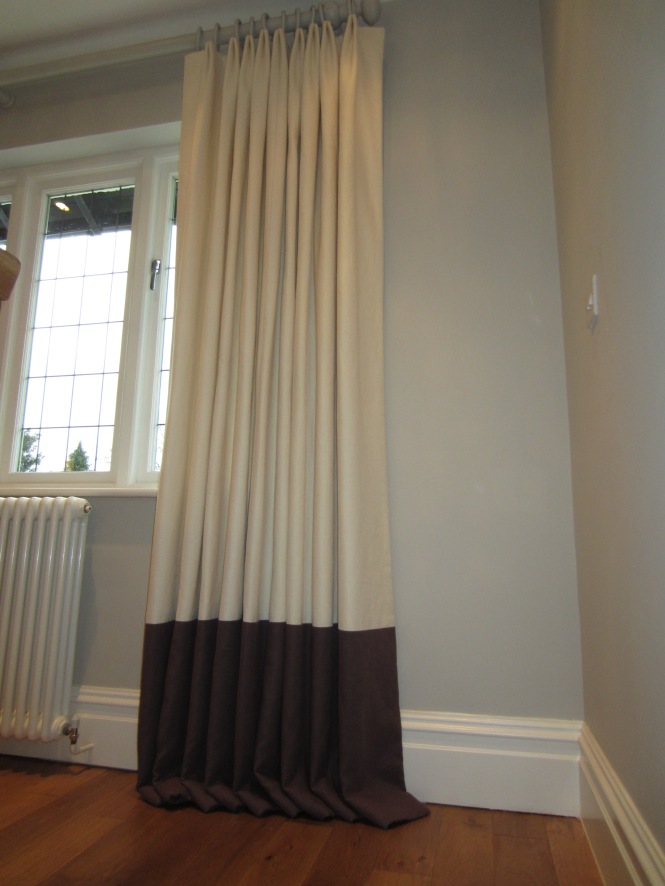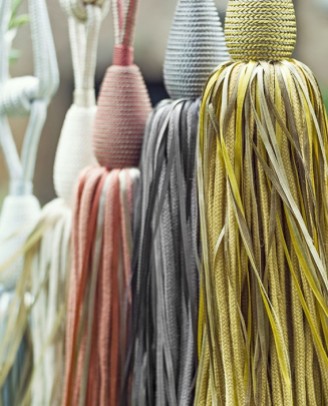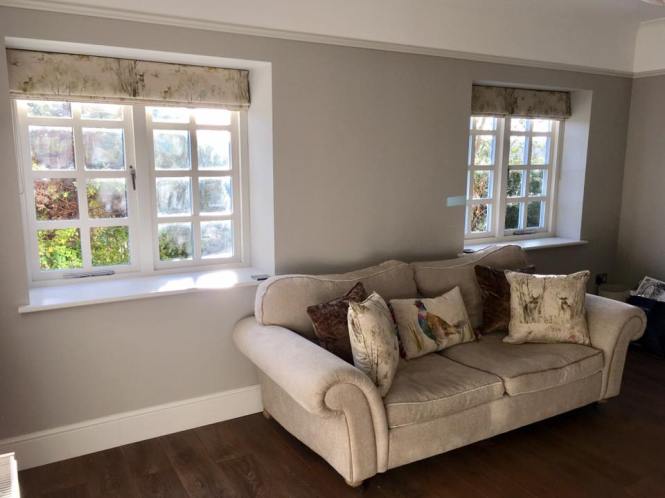 Hello everyone.
Hello everyone.
This is probably the most common question I have been asked by clients over the last 20+ years. Obviously there are several factors that effect your selection. If you are someone who prefers to look for your own fabric or just simply want an idea of what is out there, then this post is for you.
1. COLOUR
Colour, the first question. What colour?
There are several ways to tackle this. You can match up with existing item/s in the room. You can choose either a complimentary or a contrasting colour. You can select a colour based on the type of room using colour theory.
Yellow = A thinking colour, great for offices and places of activity.
Green = A relaxing colour, it is a calming shade. This is why you see it in doctors and dentist waiting rooms and on surgeons gowns.
Red = A strong, warm colour not fantastic in huge quantities in a room you wish to relax in, can have a tendency to make people feel uncomfortable.
Blue = A cold colour, not advisable to use in north facing rooms or dark rooms, as it can make you feel colder than the room actually is.
There are so many other parts to colour theory, that involve many factors, one of which is balance. This is largely related to the “Golden Section”. In basic terms the balance of 3, or 3 to 1 ratio. If, however you want to get technical = 
Simply put For example if you are painting your walls and you want to use 2 colours, never paint 2 in one colour and 2 in another. It will never look right. I recommend you paint 1 in one colour and 3 in another. Or paint the alcoves in one colour and the rest in another, or paint the fire place one colour and the other walls another and so on. Selection of fabric can control this especially if the window takes up a big space.
Some people like the curtain / blind to blend with the wall, others like them to stand off / contrast with the wall. Some companies specialise is certain colour combinations. This factor is a personal design choice or style.
Pattern
This is the big one. There is a plethora of choice out there, so what I am about to say only skims the surface. Some companies focus one a particular style and or pattern. Most companies have a mix of patterns across their portfolio.
Here are some of the basics.
Stripes = Great on blinds and windows you want to make look taller. The wider / bigger the blind / cutain the wider the stripe needs to be, please don’t put a pin stripe on a patio window, the chances are it will send your eyes funny.

www.facebook.com/whitewolfeint Harlequin fabric blind on an Evans Rail
Checks= Checks work on blinds and curtains, please be aware though that if the pattern runs out on the fabric, it always stands out more on a check.

www.facebook.com/whitewolfeint
Florals = These also go in most places, it is a style choice though. Modern florals and traditional ones are available. Closed pattern or open with lots of gaps. It is up to you what you can live with.

Designs by Kelly White at www.facebook.com/whitewolfeint
Plain= This works pretty much anywhere. You can make them more interesting by using contrast leading edges, borders and trims. A designer can go over choices with you.
Designs by Kelly White at www.facebook.com/whitewolfeint
Add In Fabrics= So you already have a pattern in a room? What to put with what?
Stripe= Never use more than one type of stripe please, it very rarely works. However if you have a floral settee you could use a stripe on the window and cushions.
Check= Same rule applies as above. Checks are great as they go with anything. There are so many out their, modern and traditional. They are a great add in fabric.
Floral= Mixing florals can be tough but there are collections out there that do it for you, this can be very handy. You can find large and small florals in one collection in the same colour way.
Traditional / Modern = This all boils down to a clients personal preference, existing furniture and type of house. You do not have to have a fussy fabric for a traditional design or a completely plain one for a contemporary design.
Designs by Kelly White at www.facebook.com/whitewolfeint
Company
Some companies specialise is a style, pattern, colour combination or even price range. It can be difficult to find the fabric you love only to discover it is out of your range or you feel it is more than you want to spend. These following companies are the tip of the iceberg and what I would class as the most well known of the companies.

Harlequin fabrics ( www.harlequin.uk.com )= This company do a wide selection of patterns but largely focus on contemporary design. Florals, stripes, checks, you name it, they do it and they do it well. Middle to upper price range.
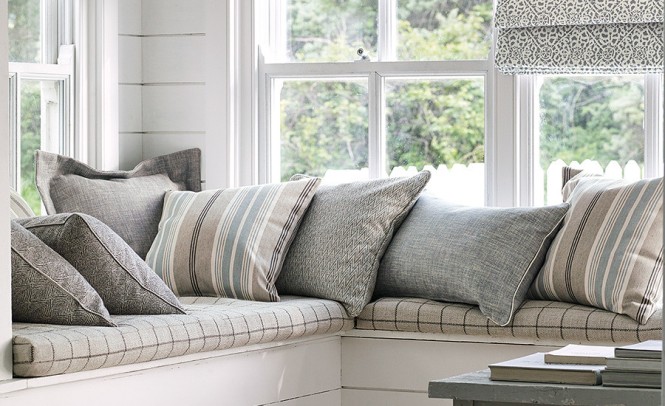
Romo Fabrics ( www.romo.com ) = This company do a mix also, however they are the ones I tend to go for if I need a stripe or check. They also have a great range of contemporary linen florals that drape really well. Middle upper price.
Sanderson ( www.sanderson-uk.com )= They have some contemporary designs but their strength lies in their traditional William Morris prints and weaves. These are beautiful, they are very good at re colouring them to make the colour pallet more relevant to today, as well as having traditional tones. Middle upper price.
Prestigious Clarke and Clarke ( http://www.prestigious.co.uk & http://www.clarke-clarke.com/ )= These are companies that focus on good price points with crowd pleasing designs. They have a nice mix of patterns but stick largely to a more affordable price range.

Fibre Naturelle (http://www.fibrenaturelle.com/ ) = This company I would go to for rustic weaves.

Moon (www.moons.co.uk )= Brilliant for wool checks.

Voyage (http://www.voyagedecoration.com/ ) = Weaves, embroidery a bit of affordable bling. They also have some great country prints. Middle upper costs.

James Hare ( http://james-hare.com/ )= Silk
Designers Guild ( www.designersguild.com )= Unusual and vibrant colours and strong patterns. Upper price range.

Scion Fabrics ( www.scion.uk.com )= Modern, fun almost Scandinavian in style affordable and good quality.
Drape / Fit For Purpose
This area I would recommend you get professional help with. It takes a certain level of experience to understand from a small piece of fabric how it will hang / drape. And if the type of cloth fit for purpose, for the room it is in. There is an earlier blog that goes some way to assist you in this area by listing the properties of some of the most well known fibre types. Only your designer / seamstress can guide you, however, to how a particular fabric will work for you, the window treatment and how it will hang.
Fabric fit for purpose
Upholstery fabric has a martindale test. The Martindale is a unit for quantifying the abrasion resistance of textiles, especially when used for upholstery.
|
Soft padding
[Martindale] |
Hard padding
[Martindale] |
| Private use |
10,000 |
15,000 |
| Office use |
25,000 |
35,000 |
| For public transportation |
30,000 |
40,000 |
This is the official info. I personally would not touch an upholstery fabric less that 20/25000 rubs for domestic. 40+ for contract. The fire certificate is also different for domestic than contract. make sure you get a certificate. Contract is a higher rating and needs to be what is called crib 5.
I would not advise a Backcoated fabric treated for upholstery to be used on blinds or curtains as it has a tendency to be quite stiff, this can ruin the way the fabric hangs. The fabric can struggle to lay flat on a blind and skirts out on a curtain. The treatment also makes it tough to sew. Some people have chosen to use it but in the knowledge of the possible aesthetic results.
Often fabrics have on the back of the sample or book what their use is. There will be a picture of a curtain or settee for example.
There are also different fabrics for using in the garden. You can also get indoor and outdoor foam.
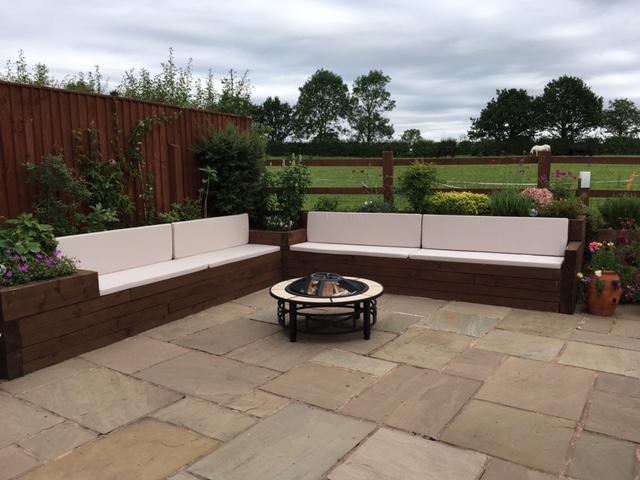
Designed by Kelly White at www.facebook.com/whitewolfeint
I hope you have found this blog helpful / informative. If you have any questions with regards to this or any other post, even if it is just what the fabric is that I have used, please do not hesitate to contact me on this site or on www.facebook.com/whitewolfeint .
Thank you for reading. Best regards
Elsie Wolfe (Kelly White)







 Hello everyone.
Hello everyone.









